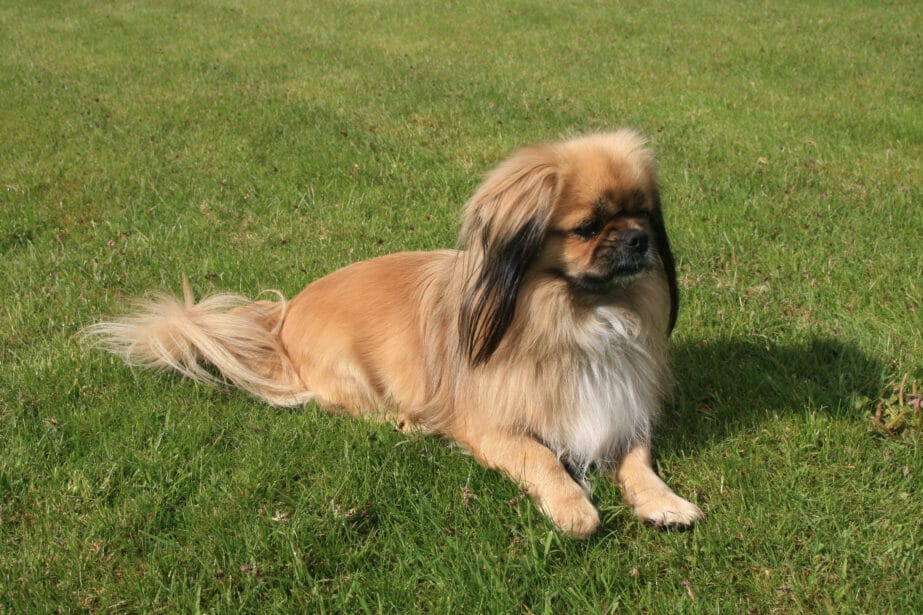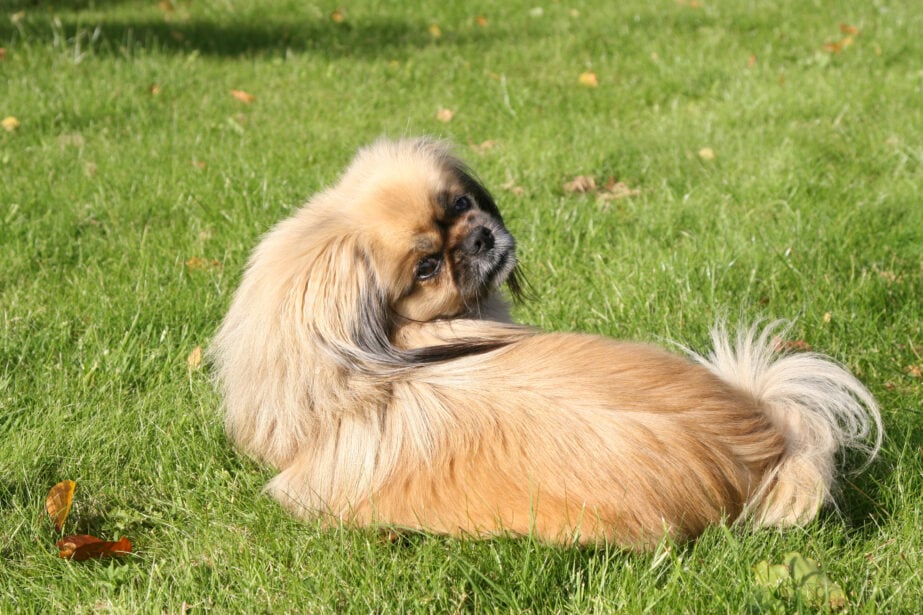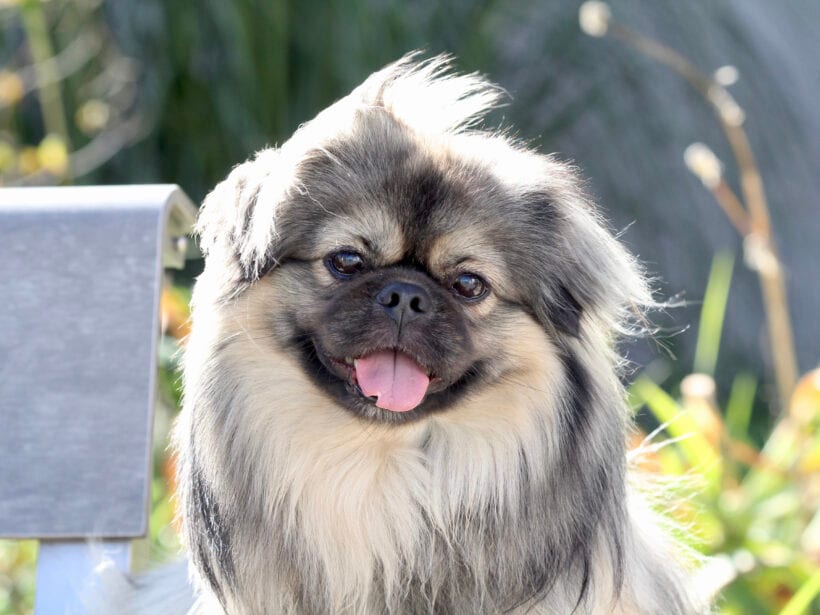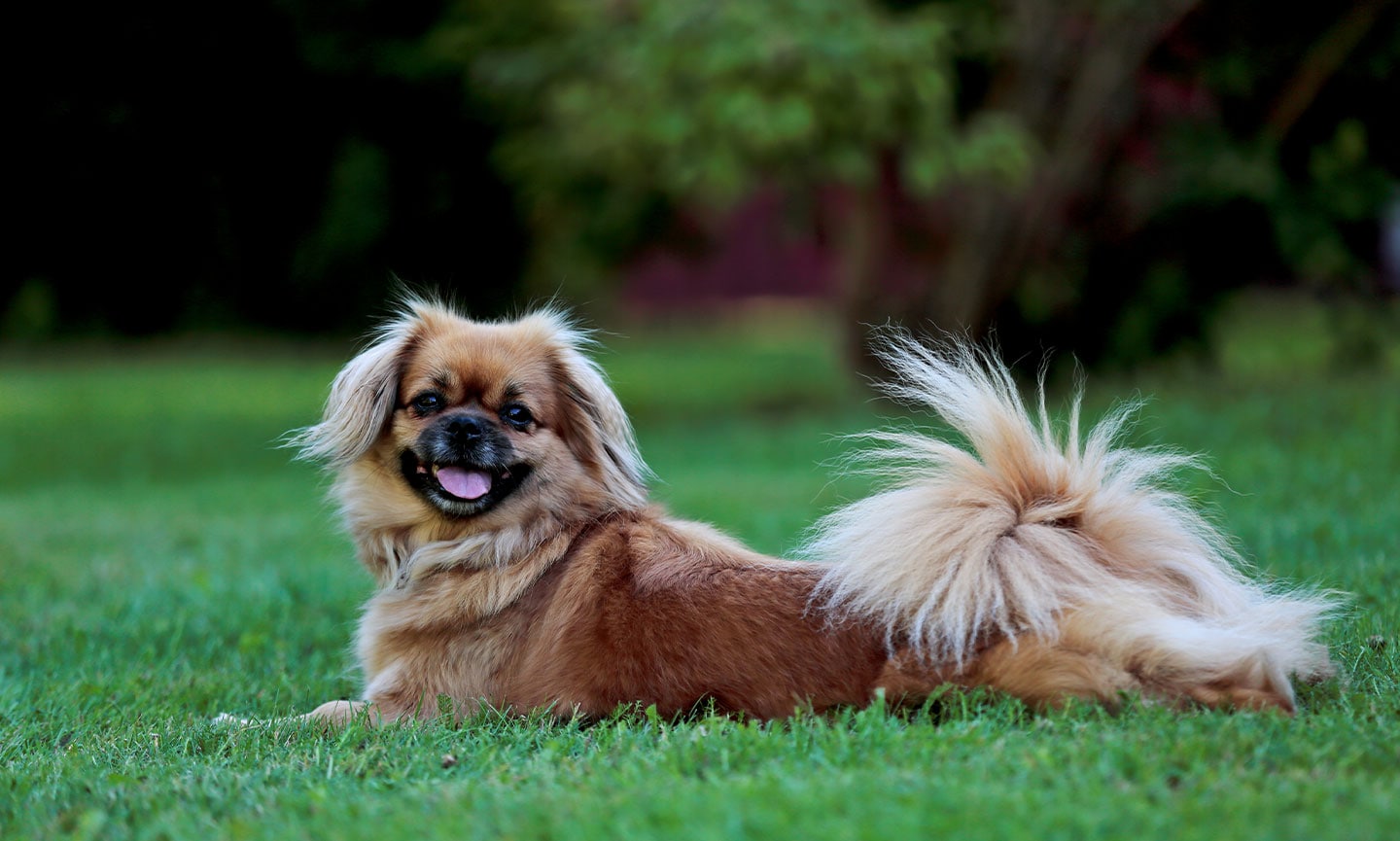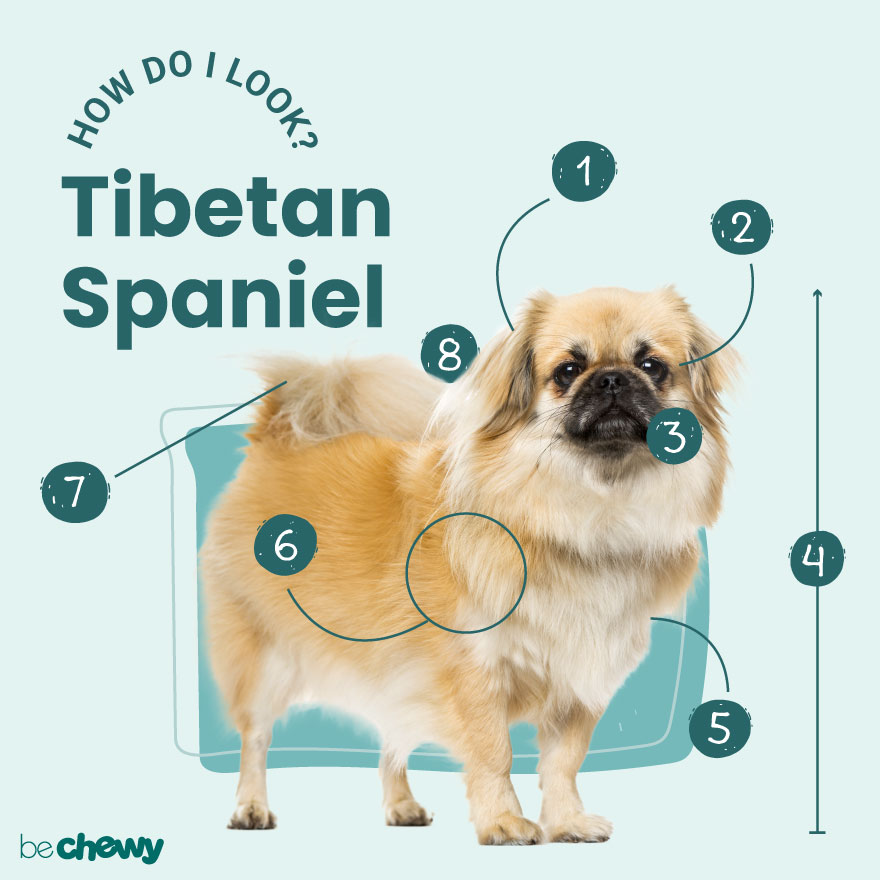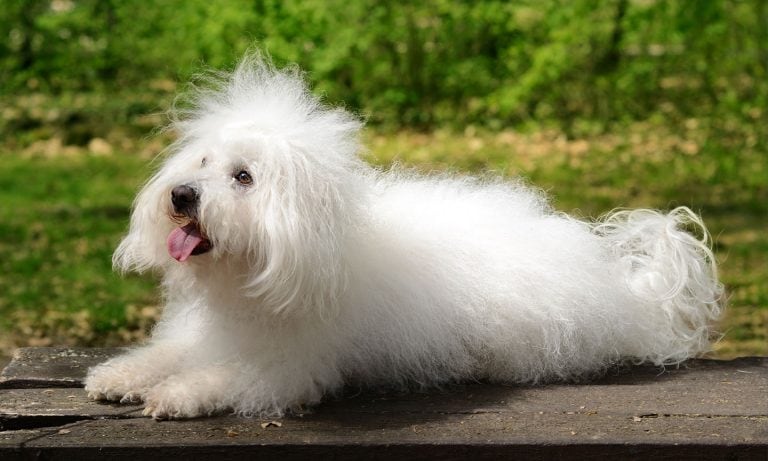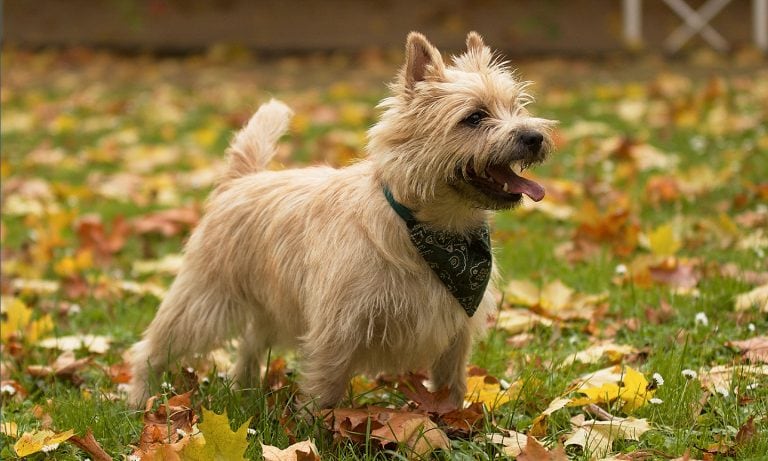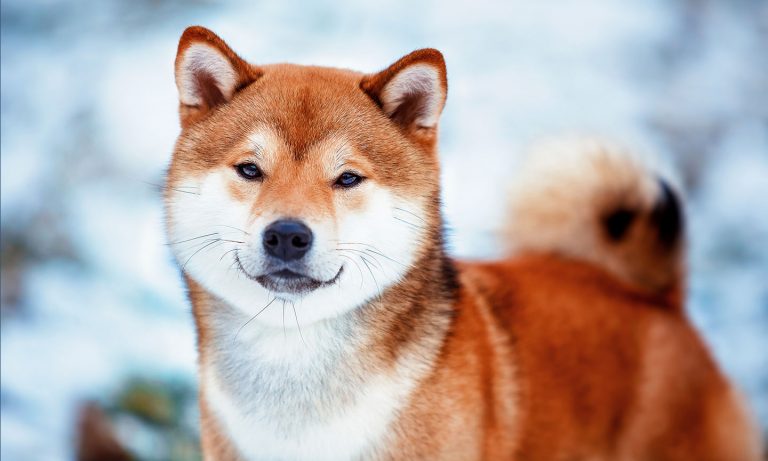A petite pup who loves attention, the Tibetan Spaniel is happy to be your lapdog. But there’s so much more to this spunky breed than looking cute. Tibbies earned the nickname “little lion” while serving as watchdogs for Buddhist monks, and it’s not only an accurate description of how they look (with their thick manes around their neck and chest), but also how they act. Despite their small stature, they’re not afraid to raise the alarm when they sense a threat to their kingdom—even if it’s just the UPS driver dropping off the latest haul from your midnight retail therapy sesh. And like the king of the jungle, they tend to make their own rules, deciding what they want, when they want it. (No pushovers here!) When not on watchdog duty, these little leos dutifully play the role of loyal companion. Your lap will be their favorite place to nap—with one eye open, of course.
Breed Snapshot
Temperament:
CuddlyFun-LovingSelf-AssuredCoat Color:
BlackBlack And TanCreamGoldRedSableSilver SableWhite
Best For
Tibetan Spaniels are loyal, lively companions. They come with relatively easy upkeep—that silky coat isn't as hard to care for as it looks—and make great watchdogs. They may look like mini lions, but they'll only devour you in kisses.
Tibetan Spaniel Temperament
Tibetan Spaniels may be small in size, but they lack for nothing regarding their personality. Their temperament is often described as “a big dog trapped in a small dog’s body.” It’s easy to see why. Tibbies are not wallflowers. They are smart, assertive and affectionate, and they love attention, so you better be prepared to give it freely. (With a cute face like theirs, how could you not?) But in return, Tibbies are your most loyal “little lion,” as the monks in Tibet called them.
What Tibbies don’t need is a lot of exercise. Their short height, stubby legs and flat faces don’t set them up to be extreme athletes of any sort. That said, they do love to play and zip around the yard or go for walks and even short jogs if that’s what you’re into (they can be speedier than you’d think). Because most of all, Tibbies are social, chummy creatures who want to please their people and are happy to flex to your needs. And, of course, all dogs need some exercise to stay healthy and keep their weight in check. Tibbies, in particular, are prone to becoming overweight, which comes as no surprise since they find food and treats highly enticing.
Tibbies’ calm and gentle nature makes them great therapy dogs, and they get along well with just about anyone in the home—from children to other dogs or cats. In fact, they’re sometimes even compared to cats (but, please, don’t tell them, they are sensitive). It’s not just that they resemble miniature lions; they also love a good window view—especially from on top of your furniture—and they even groom themselves with the same fastidious attention to detail.
How to Care for a Tibetan Spaniel
Part of what makes the Tibetan Spaniel breed such a wonderful pet is that these dogs are, for all their princely appearance, pretty low maintenance. They are easily adaptable to many kinds of homes, and don’t require a ton of exercise. Shedding can be an issue, but regular brushing will keep it in check. Their quick wit can make training tricky, so it’s important to start early.
Tibetan Spaniel Health
The Tibetan Spaniel lifespan is 12 to 15 years, and they are a relatively healthy breed. Still, they may be susceptible to a few genetic problems, some of which, especially the orthopedic conditions, are not uncommon in small breeds. But well-informed pup parents can ensure their pup lives the healthiest life possible.
- Patellar Luxation: Simply put, this is when the kneecap slides in and out of its groove. If it’s mild, it may not create much trouble for your pup and can be treated with pain medication and weight management. But more severe cases can cause limping or serious pain. In that case, surgery can correct the problem.
- Ocular Disorders: These can include:
- Progressive Retinal Atrophy: A degenerative disease that leads to blindness. There is no treatment, but responsible breeders will screen their dogs to prevent passing this inherited condition on to future generations of puppies.
- Entropion: When the eyelids roll inwards, and the eyelashes and other hair scratches the cornea leading to irritation and damage. Topical antibiotic ointment or surgery may be used to treat the condition.
- Retinal Dysplasia: Abnormal formation of the retinal tissue that can also lead to blindness. There is no treatment, but responsible breeders will screen their dogs to prevent passing this inherited condition on to future generations of puppies.
- Cherry Eye: Inflammation of tissue adjacent to the eye. Surgery is needed to correct it.
- Portosystemic Shunt (Liver Shunt): This is an abnormal connection between the large vein that brings blood into the liver and other veins, thereby allowing blood to bypass the liver. Treatment options include special diets, medications and, in severe cases, surgery.
- Brachycephalic Syndrome: Flat-faced or smooshed-faced brachycephalic dogs have anatomical changes to their nose and throat that make them more prone to overheating and breathing issues. It is best to keep Tibetan Spaniels out of the heat, especially on humid days, and take them to the vet immediately if they are having trouble breathing or you are concerned they may have overheated.
Tibetan Spaniel History
The origin of Tibetan Spaniels is—surprise!—in Tibet, where Buddhist monks bred them as sentinels. There, Tibbies settled high on monastery walls to keep a keen eye out for approaching allies or enemies. When they caught sight of someone, their distinctive, throaty bark would alert their (much larger) buddies, the Tibetan Mastiffs, down below, who would then pounce, if needed, chasing intruders away. To this day, their unique history endures as one of the stand-out traits of Tibetan Spaniels, as they still make fine watchdogs. But let’s be clear: they’re never going to be your bouncer, but they’ll sure as heck let you know when someone’s at the door.
When they were off duty, these dogs served their monks as companions and, smartly, bed warmers—a clutch move in the Himalayas where winter temps regularly dip below zero. The monks referred to their dogs as “little lions” not only because of their appearance but also because lions were sacred symbols of Buddha. These mini leos were so prized that they were never sold, only gifted to noble or prestigious rulers and leaders in China and other Buddhist nations. If they moved, it was from a monastery to a palace.
Tibetan Spaniels, as it turns out, are not actually spaniels. That part of their breed name came from the French word epagnuel, which referred to a companion and comfort dog in the Middle Ages. Tibbies came to England in the late 19th century, but not many were bred until after World War II. They arrived in the United States in the late 1960s, and the American Kennel Club recognized them in 1983 as part of the Non-Sporting group (the category of dogs who don’t neatly fit into another group).
You can find Tibbies to purchase by checking out a list of reputable breeders on the American Kennel Club’s website. The average price for a Tibetan Spaniel puppy is about $2,000. Good breeders should provide two to three sets of vaccinations before releasing their puppies, so they should be at least 12 weeks old and include a health guarantee. The Tibetan Spaniel Club of America operates a rescue operation, although available dogs are rare. You can also search Chewy’s database of adoptable dogs for Tibbies in your area.
FAQs
Do Tibetan Spaniels shed?
Yes, Tibetan Spaniels shed, but it’s not excessive. Regular brushing should help you control it. Tibbies only mat behind their ears and on their rear fringes, so a good comb is necessary. They don’t need haircuts or professional grooming, and the only trimming they need is under their feet for cleanliness.
Are Tibetan Spaniels good family dogs?
Absolutely, Tibetan Spaniels are good family dogs. These dogs form deep bonds with their humans, and they love children. It is important, however, to teach kids to respect Tibbies and not be too rough with them. They are small dogs, but they have long memories.
Can Tibetan Spaniels be left alone?
Yes, Tibetan Spaniels can be left alone, but one of the quintessential characteristics of these furry friends is that they most enjoy being with their families. They’re super not interested in a lot of alone time. FOMO is real. No dog should be left alone for more than a few hours at a time anyway.
How long do Tibetan Spaniels live?
Their life expectancy is 12 to 15 years giving you a lot of time to create many wonderful memories.
Do Tibetan Spaniels bark a lot?
Tibetan Spaniels do not bark a lot. They do bark, and theirs is a distinctive one—quick and deep—but they are not yappy. They bark to alert you when they sense something is going on or when someone is approaching, which is what makes them such great security dogs.
What are the most common Tibetan Spaniel mixes?
The most common Tibetan Spaniel mixes are:
- Tibetan Spaniel-Pomeranian mix (Tibetan Pom)
- Tibetan Spaniel-Chihuahua mix (Tibetan Spaniel Chihuahua)
- Tibetan Spaniel-Pekingese mix (Tibetan Spaniel Pekingese)
- Tibetan Spaniel-Shih Tzu mix (Tibetan Spaniel Shih Tzu)
- Tibetan Spaniel-Dachshund mix (Tibetan Spaniel Dachshund)
Note: These are not purebred dogs but mixed breeds.
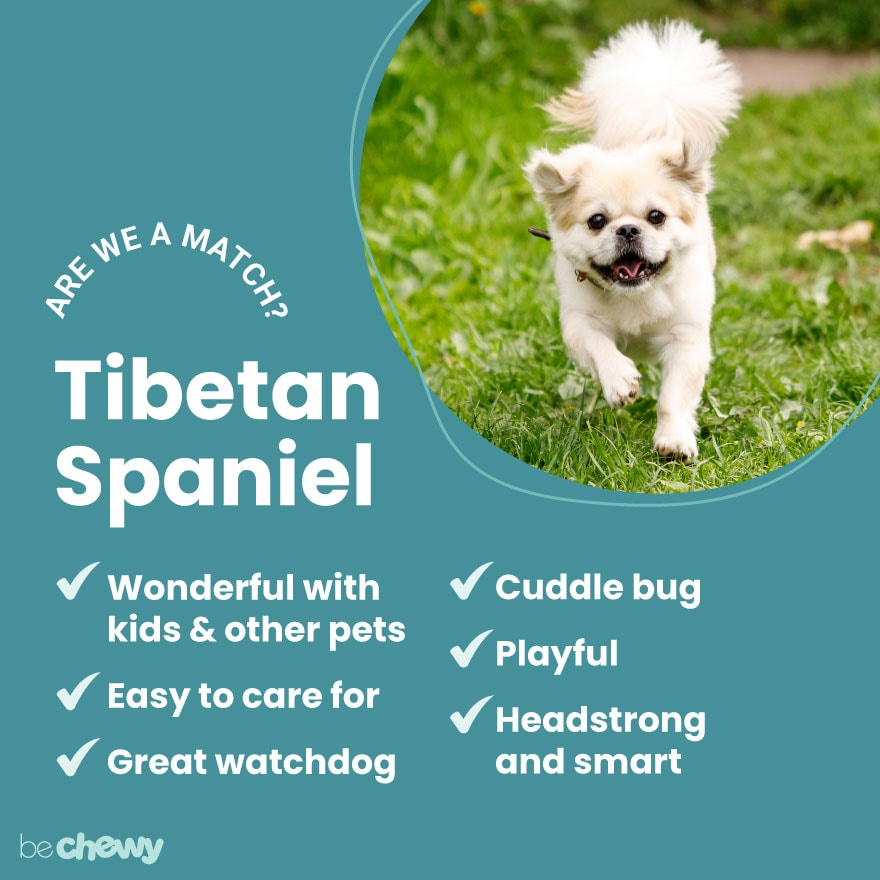
Top Takeaways
Tibetan Spaniels are devoted companions who can adapt to the needs of just about any pet parent. They are not super athletes, but they are super watchdogs, super smart and super playful. They don’t require much from you other than lots of attention. But rest assured, they’ll pay you back in full with kisses and snuggles galore.
Expert input provided by veterinarian Dr. Christine Klippen, DVM, an emergency physician at the Friendship Hospital For Animals, Washington, DC; Mark Forrest Patrick, a certified dog trainer, owner of Tuxedo’s K9 Training Camp in Rochester, NY, and the 2021 chairman of the Association of Professional Dog Trainers; and Mallory Cosby Driskill, vice president of the Tibetan Spanial Club of America.
Breed characteristic ratings provided by veterinarian Dr. Sarah J. Wooten, DVM, CVJ, a veterinarian at Sheep Draw Veterinary Hospital in Greeley, Colorado; dog trainer and behavior consultant Irith Bloom, CPDT-KSA, CBCC-KA, CDBC, owner of The Sophisticated Dog, LLC, in Los Angeles; and certified animal behavior consultant Amy Shojai, CABC, in Sherman, Texas.
The health content was medically reviewed by Chewy vets.

Search for Adoptable Tibetan Spaniels Near You
Female Names
- Cookie
- Sister
- Daisy
- Tashi
- Juniper
- Biskit
- Cookie
- Maggie Mae
- Bailey
- Doggo
Male Names
- Dexter
- Teddy
- Mochi
- Boaz
- Nugget
- Sonny
- Monty
- Simba
- Lucky
- Percy
Share:



